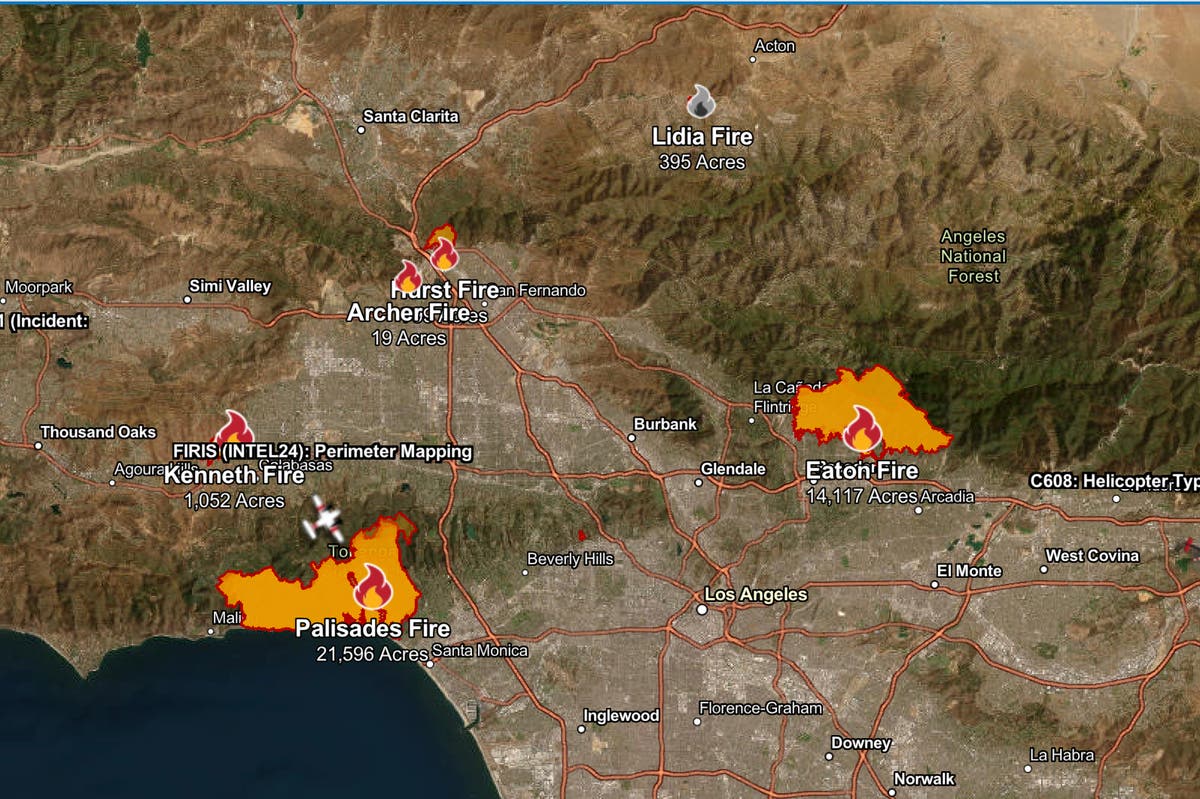 Xiqing Wang/
Xiqing Wang/The hum of sewing machines is a constant in parts of Guangzhou, a thriving port on the Pearl River in southern China.
It rattles through the open windows of factories from morning until late at night, as they finish the t-shirts, shorts, blouses, pants and swimwear that will be shipped to fill wardrobes in more than 150 countries.
This is the sound of Panyu, the neighbourhood known as the “Shein village”, a warren of factories that power the world’s largest fast fashion retailer.
“If there are 31 days in a month, I will work 31 days,” one worker told the .
Most said they only have one day off a month.
The spent several days here: we visited 10 factories, spoke to four owners and more than 20 workers. We also spent time at labour markets and textile suppliers.
We found that the beating heart of this empire is a workforce sitting behind sewing machines for around 75 hours a week in contravention of Chinese labour laws.
These hours are not unusual in Guangzhou, an industrial hub for rural workers in search of a higher income; or in China, which has long been the world’s unrivalled factory.
But they add to a growing list of questions about Shein, once a little-known Chinese-founded company that has become a global behemoth in just over five years.
Still privately-owned, it is estimated to be worth about £36bn ($60bn) and is now eyeing a listing on the London Stock Exchange.
Its meteoric rise, however, has been dogged with controversy about its treatment of workers and allegations of forced labour.
Last year it admitted to finding children working in its factories in China.
The company declined to be interviewed but told the in a statement that “Shein is committed to ensuring the fair and dignified treatment of all workers within our supply chain” and is investing tens of millions of dollars in strengthening governance and compliance”.
It added: “We strive to set the highest standards for pay and we require that all supply chain partners adhere to our code of conduct. Furthermore, Shein works with auditors to ensure compliance.”
Shein’s success lies in volume – the inventory online runs into the hundreds of thousands – and deep discounts: £10 dresses, £6 sweaters, prices that hover below £8 on average.
Revenue has soared, outstripping the likes of H&M, Zara and the UK’s Primark. The cut-price sales are driven by places like the Shein village, home to some 5,000 factories, most of them Shein suppliers.
The buildings have been hollowed out to make way for sewing machines, rolls of fabric and bags brimming with cloth scraps. The doors to their basements are always open for the seemingly endless cycle of deliveries and collections.
As the day passes, the shelves fill up with warehouse-bound, clear plastic bags labelled with a now-distinctive five-letter noun.
But even past 22:00, the sewing machines – and the people hunched over them – don’t stop as more fabric arrives, in trucks so full that bolts of colour sometimes tumble onto the factory floor.
 Xiqing Wang/
Xiqing Wang/  Xiqing Wang/
Xiqing Wang/ “We usually work, 10, 11 or 12 hours a day,” says a 49-year-old woman from Jiangxi unwilling to give her name. “On Sundays we work around three hours less.”
She is in an alleyway, where a dozen people are huddled around a row of bulletin boards.
They are reading the job ads on the board, while examining the stitching on a pair of chinos draped over it.
This is Shein’s supply chain. The factories are contracted to make clothes on order – some small, some big. If the chinos are a hit, orders will ramp up and so must production. Factories then hire temporary workers to meet the demand their permanent staff cannot fulfil.
The migrant worker from Jiangxi is looking for a short-term contract – and the chinos are an option.
“We earn so little. The cost of living is now so high,” she says, adding that she hopes to make enough to send back to her two children who are living with their grandparents.
“We get paid per piece,” she explains. “It depends how difficult the item is. Something simple like a t-shirt is one-two yuan [less than a dollar] per piece and I can make around a dozen in an hour.”
Examining the stitching on the chinos is crucial for making that decision. All around her, workers are calculating how much they will get paid to make each piece of clothing and how many they can make in an hour.
The alleys of Panyu function as labour markets, filling up in the mornings as workers and scooters rush past the breakfast dumpling cart, the cups of steaming soybean milk and the hopeful farmer selling chicken and duck eggs.
 Xiqing Wang/
Xiqing Wang/  Xiqing Wang/
Xiqing Wang/Standard working hours appear to be from 08:00 to well past 22:00, the found.
This is consistent with a report from the Swiss advocacy group Public Eye, which was based on interviews with 13 textile workers at factories producing clothes for Shein.
They found that a number of staff were working excessive overtime. It noted the basic wage without overtime was 2,400 yuan (£265; $327) – below the 6,512 yuan the Asia Floor Wage Alliance says is needed for a “living wage”. But the workers we spoke to managed to earn anywhere between 4,000 and 10,000 yuan a month.
“These hours are not unusual, but it’s clear that it’s illegal and it violates basic human rights,” said David Hachfield from the group. “It’s an extreme form of exploitation and this needs to be visible.”
The average working week should not exceed 44 hours, according to Chinese labour laws, which also state that employers should ensure workers have at least one rest day a week. If an employer wants to extend these hours, it should be for special reasons.
 Xiqing Wang/
Xiqing Wang/While Shein’s headquarters are now in Singapore, there is no denying the majority of its products are made in China.
And Shein’s success has drawn the attention of Washington, which is increasingly wary of Chinese firms.
In June, Donald Trump’s pick for US Secretary of State, Marco Rubio, said he had “grave ethics concerns” about Shein’s “deep ties to the People’s Republic of China”: “Slave labour, sweatshops, and trade tricks are the dirty secrets behind Shein’s success,” he wrote.
Not everyone would agree with Rubio’s choice of words to describe the conditions at Shein’s suppliers. But rights groups say that the long working hours, which have become a way of life for many in Guangzhou, are unfair and exploitative.
The machines dictate the rhythm of the day.
They pause for lunch and dinner when the workers, metal plates and chopsticks in hand, file into the canteen to buy food. If there is no more space to sit, they stand in the street.
“I’ve been working in these factories for more than 40 years,” said one woman who spent just 20 minutes eating her meal. This was just another day for her.
Inside, the factories we visit are not cramped. There is enough light and industrial-sized fans have been brought in to keep workers cool. Huge posters urge staff to report underage workers – likely a response to finding two cases of child labour in the supply chain last year.
 Xiqing Wang/
Xiqing Wang/ Xiqing Wang/
Xiqing Wang/The understands that the company is keeping a closer eye on its suppliers ahead of plans to go public on the London Stock Exchange.
“This is about their reputation,” says Sheng Lu, a professor in Fashion and Apparel Studies at the University of Delaware. “If Shein can successfully achieve an IPO then it means they are recognised as a decent company. But if they are to keep the confidence of investors, they have to take some responsibility.”
One of the biggest challenges Shein faces is accusations that it sources cotton from China’s Xinjiang region.
Once touted as among the world’s best fabric, Xinjiang’s cotton has fallen out of favour after allegations that it is produced using forced labour by people from the Muslim Uyghur minority – a charge that Beijing has consistently denied.
The only way to get around this criticism is to be more transparent, Prof Sheng says.
“Unless you fully release your factory list, unless you make your supply chain more transparent to the public, then I think it’s going to be very challenging for Shein.”
A major advantage, he adds, is that Shein’s supply chain is in China: “Very few countries have a complete supply chain. China has this – and nobody can compete.”
Aspiring rivals like Vietnam and Bangladesh import raw materials from China to make clothes. But Chinese factories rely entirely on local sources for everything, from fabric to zippers and buttons. So it’s easy to make a variety of garments, and they are able to do it quickly.
 Xiqing Wang/
Xiqing Wang/That especially works for Shein whose algorithm determines orders. If shoppers repeatedly click on a certain dress, or spend longer looking at a wool sweater, the firms knows to ask factories to make more – and fast.
For workers in Guangzhou, this can be a challenge.
“Shein has its pros and cons,” one factory owner told us. “The good thing is the order is eventually big, but profit is low and it’s fixed.”
Shein, given its size and influence, is a hard bargainer. So factory owners have to cut costs elsewhere, often resulting in lower staff wages.
“Before Shein, we produced and sold clothes on our own,” said an owner of three factories. “We could estimate the cost, decide the price and calculate the profit. Now Shein controls the price, and you have to think about ways to reduce the cost.”
When orders peak, however, it’s a bonanza. The company ships around one million packages a day on average, according to data from ShipMatrix, a logistics consultancy firm.
 Xiqing Wang/
Xiqing Wang/ “Shein is a pillar of the fashion industry,” said Guo Qing E, a Shein supplier.
“I started when Shein started. I witnessed its rise. To be honest, Shein is an awesome company in China. I think it will become stronger, because it pays on time. This is where it is most trustworthy.
“If payment for our goods is due on the 15th, no matter whether it’s millions or tens of millions, the money will be paid on time.”
Shein, with its gruelling hours and sometimes lower wages, may not be a source of comfort to all its workers. But it is a source of pride for some.
“This is the contribution we Chinese people can make to the world,” said a 33- year-old supervisor from Guangdong, who didn’t want to give her name.
It’s dark outside and workers are filing back into factories after their dinner for the final stretch. She admits the hours are long, but “we get on well with each other. We are like a family”.
Hours later, after many workers head home for the night, the lights in several buildings stay on.
Some people work until midnight, one factory owner told us. They want to earn more money, he said.
After all, in London, Chicago, Singapore, Dubai and so many other places, someone is hunting for their next bargain.







